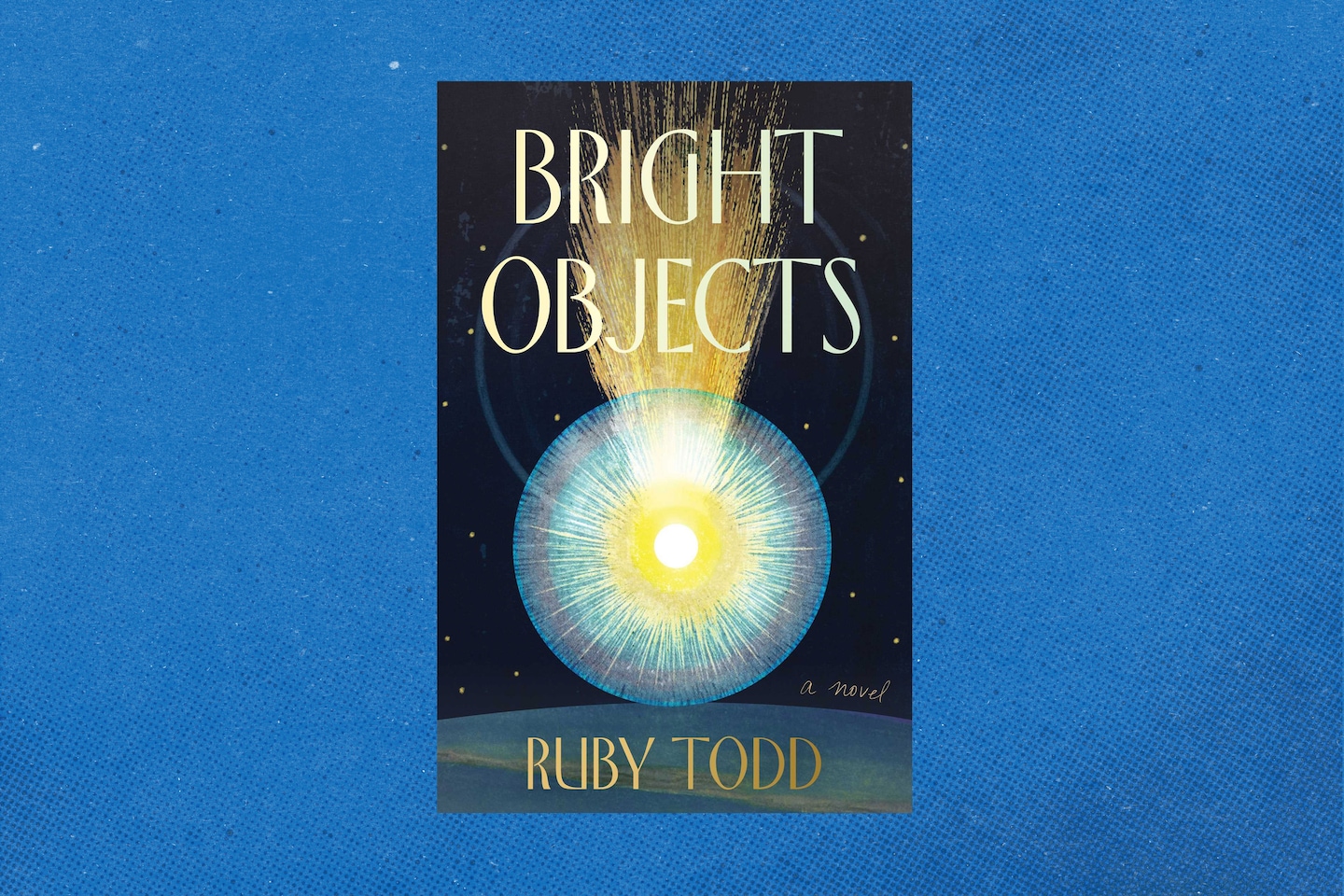The arrival of Comet St. John, also set in 1997, has been compared to “the circus surrounding royal births—the professional spectators, the spokesmen, the public and the press, all eager to fill the void before the new creature makes its first appearance.” Locals watch the rural skies with great anticipation. Following Hale-Bopp’s lead, eccentrics believe that a UFO is trailing the comet, sending the community into an uproar and threatening the already precarious existence of a 31-year-old widow named Sylvia Knight.
Sylvia, who narrates the novel, is a deeply depressed funeral director whose husband was killed in a car accident two years earlier. Sylvia was driving when they were struck. Now physically recovered, but haunted by survivor’s guilt, surrounded by the dead in her office and in her thoughts, she plans to commit suicide on the night that Comet St. John first appears to the naked eye, a date that coincides with the second anniversary of her husband’s death.
“Bright Objects” begins with an arresting premise: “When I died for the second time,” Sylvia tells us in a prologue, “in August 1997, in the flowery bedroom of a country house while Chopin’s ‘Nocturnes’ played …” But the first act gets bogged down in the details of Sylvia’s mood. Though Todd writes well about despondency, she relies heavily on internal monologues to portray it, and the book’s pacing suffers early from a lack of action. “I didn’t want to see myself aging without Christopher,” Sylvia thinks, “I didn’t want to see time etched into my features, like a tragic Nosferatu, alone and weary of life but condemned to survive.”
Sylvia is pulled out of her downward spiral by, of all people, the comet’s original discoverer, Theo St. John, an Arizonan who surveys the heavens from a nearby observatory. Theo himself is a distant, sulky man, handsome and brooding, and his amorous incursions lead to the gradual collapse of Sylvia’s plan. Given her disposition, there’s nothing easy about romance (“I think I wish I had met you some other time,” Theo says). But, like a cosmic pheromone, here comes the comet. For Sylvia and Theo, the time is now.
As “Bright Objects” expands, Sylvia plots to take down a local police officer she believes is responsible for the hit-and-run. And through her work at the funeral home, she comes into contact with Joseph, a floaty, sweet-talker who has gullible neighbors hanging on his every word. He says things like, “Beings seem to exist only in the period between physical birth and death. But this is an illusion of the external senses, which cannot discern the spirit hidden within all things.” Sylvia soon notices a certain bright-eyed vibe emanating from his followers.
Given Theo’s penchant for science and reason, she asks for his help in freeing one of the followers, her mother-in-law, from Joseph’s group before something goes terribly wrong, probably during the St. John Comet Near-Earth Festival.
“Ultimately, it felt like the whole world was waiting for St. John to approach the sun,” Todd writes, “in the same way a crowd waits for a woman to be lifted up in a ballroom dance so they can applaud and exhale.”
The comet grows clearer by the day before finally reaching its peak visibility. Todd follows its progress across the constellations, steering her winding story with artful control. “I had my hopes for what the brightest point would bring,” Sylvia thinks of St. John, “but I never imagined it would become a key, one that would finally reveal the truth, reverse my blindness, my instinct for grievance and self-punishment, and in the heat of rebirth, point the way to an unlikely freedom.”
Whatever readers already know about the Heaven’s Gate tragedy, “Bright Objects” builds to a satisfying (and satisfyingly unexpected) finale. Part thriller, part mystery, the novel’s genre elements are commendably propulsive. Some of the problems—uneven pacing, inconsistent characterization—are common in debut novels, and they don’t obscure the fact that Todd’s confidence and talents portend a bright future.
If you or someone you know needs help, please visit 988lifeline.org or call or text the Suicide & Crisis Lifeline on 988.
Eric Olson is a writer and critic based in Seattle.
Simon & Schuster. 334 pp. $28.99
